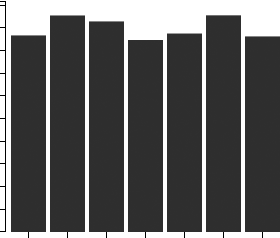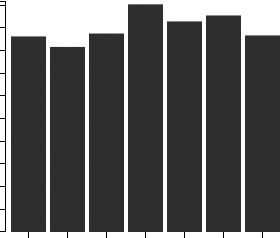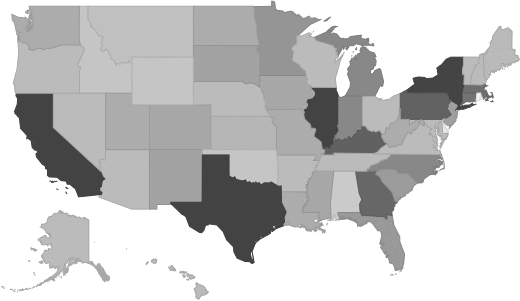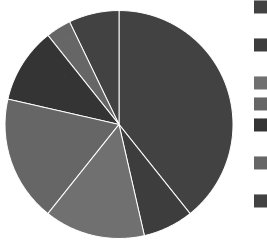Coastal & Great Lakes Freight Transportation Industry - Market Research Report
Industry Overview
This U.S. industry comprises establishments primarily engaged in providing water transportation of cargo in coastal waters, on the Great Lakes System, or deep seas between ports of the United States, Puerto Rico, and United States island possessions or protectorates. Marine transportation establishments using the facilities of the St. Lawrence Seaway Authority Commission are considered to be using the Great Lakes Water Transportation System. Establishments primarily engaged in providing coastal and/or Great Lakes barge transportation services are included in this industry.
Source: U.S. Census BureauMarket Size and Industry Forecast
This research report analyzes the market size and trends in the Coastal and Great Lakes Freight Transportation industry. It shows overall market size from 2020 to the present, and predicts industry growth through 2030. Revenues data include both public and private companies.
| Historical | Forecasted |
|---|
| 2020 | 2021 | 2022 | 2023 | 2024 | 2025 | 2026 | 2027 | 2028 | 2029 | 2030 |
|---|
| Market Size (Total Revenue) | Included in Report |
| % Growth Rate |
| Number of Companies |
| Total Employees |
| Average Revenue per Company |
| Average Employees per Company |
Source: U.S. government financial dataIndustry Revenue ($ Billions)

Industry Forecast ($ Billions)

Advanced econometric models forecast five years of industry growth based on short- and long-term trend analysis. Market size includes revenue generated from all products and services sold within the industry.
Geographic Breakdown by U.S. State
Market size by state reveals local opportunity through the number of companies located in the region. Each state's growth rate is affected by regional economic conditions. Data by state can be used to pinpoint profitable and nonprofitable locations for Coastal & Great Lakes Freight Transportation companies in the United States.
Coastal & Great Lakes Freight Transportation Revenue by State

Distribution by Company Size
| Company Size | All Industries | Coastal & Great Lakes Freight Transportation |
|---|
| Small Business (< 5 Employees) | Included |
| Small Business (5 - 20) |
| Midsized Business (20 - 100) |
| Large Business (100 - 500) |
| Enterprise (> 500) |
Coastal & Great Lakes Freight Transportation Industry Income Statement (Average Financial Metrics)
Financial statement analysis determines averages for the following industry forces:
- Cost of goods sold
- Compensation of officers
- Salaries and wages
- Employee benefit programs
- Rent paid
- Advertising and marketing budgets
The report includes a traditional income statement from an "average" company (both public and private companies are included).
| Industry Average | Percent of Sales |
|---|
| Total Revenue | Included |
| Operating Revenue |
| Cost of Goods Sold (COGS) |
| Gross Profit |
| Operating Expenses |
| Operating Income |
| Non-Operating Income |
| Earnings Before Interest and Taxes (EBIT) |
| Interest Expense |
| Earnings Before Taxes |
| Income Tax |
| Net Profit |
Average Income Statement

Cost of Goods Sold
Salaries, Wages, and Benefits
Rent
Advertising
Depreciation and Amortization
Officer Compensation
Net Income
Financial Ratio Analysis
Financial ratios allow a company's performance to be compared against that of its peers.
| Financial Ratio | Industry Average |
|---|
| Profitability Ratios | Included |
| Profit Margin |
| ROE |
| ROA |
| Liquidity Ratios |
| Current Ratio |
| Quick Ratio |
| Activity Ratios |
| Average Collection Period |
| Asset Turnover Ratio |
| Receivables Turnover Ratio |
| Inventory Conversion Ratio |
Products and Services Mix
Product lines and services in the Coastal & Great Lakes Freight Transportation industry accounting for the largest revenue sources.
| Product Description | Description | Revenue
($ Millions) |
|---|
| Industry total | Included |
| Trans of bulk liquids & gases, except in intermodal tank cont by wat |
| Trans box & pal gds, no clim-cntrl, except intrmdl tank cont, wat |
| Towing services |
| Trans of dry bulks, except in intermodal tank containers, by water |
| Trans of clim-contld box & pallet gds except intrmodl tank cont, wat |
| Transportation of other goods by water |
| Trans of other intermodal containers, nec, by water |
| Trans of bulk liquids & gases in intermodal tank conts by water |
| Transportation of truck trailers by water |
Salary information for employees working in the Coastal & Great Lakes Freight Transportation industry.
| Title | Percent of Workforce | Bottom Quartile | Average (Median) Salary | Upper Quartile |
|---|
| Management Occupations | 6% | Included |
| Chief Executives | 0% |
| General and Operations Managers | 2% |
| Office and Administrative Support Occupations | 14% |
| Information and Record Clerks | 6% |
| Transportation and Material Moving Occupations | 64% |
| Water Transportation Workers | 54% |
| Sailors and Marine Oilers | 21% |
| Sailors and Marine Oilers | 21% |
| Ship and Boat Captains and Operators | 27% |
| Captains, Mates, and Pilots of Water Vessels | 27% |
| Ship Engineers | 6% |
| Ship Engineers | 6% |
| Material Moving Workers | 5% |
Government Contracts
The federal government spent an annual total of
$71,839,426 on the coastal & great lakes freight transportation industry. It has awarded 60 contracts to 24 companies, with an average value of $2,993,309 per company.
Top Companies in Coastal & Great Lakes Freight Transportation and Adjacent Industries
| Company | Address | Revenue
($ Millions) |
|---|
Included |



